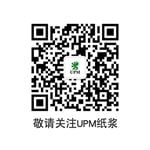There are two megatrends at play here: population growth especially in Asia – and other developing markets – and the overall aging of the global population.
Leading the charge, in many regards, is the Chinese middle class, which has emerged as a real power player in global economics. According to Brookings Institute, by 2030, China’s middle class will be spending USD 14.3 trillion – accounting for 22% of global consumption – compared to USD 4 trillion of the US middle class (7% of global consumption).
As Chinese families, especially in the cities, are gaining wealth, their consumption behaviour starts – quite often – to lean towards the West. Adapting Western standards of hygiene is just one, although significant piece of the puzzle. As ‘quality of life’ is redefined all over the vast country, the unassuming, everyday tissue product has become to embody a major shift in Chinese households.
China first?
Esko Uutela has more than 40 years’ experience in the global paper market, with tissue and recovered fibre markets as his forte. Currently the chief editor of Fastmarkets RISI’s comprehensive studies on tissue business worldwide, Uutela remarks that the Chinese tissue market has performed extremely well.
“According to the China National Household Paper Industry Association and the Global Trade Atlas, the Chinese market grew by 11% in 2021, which is significant also in keeping the global tissue growth going”.
Overall, 2020 was a banner year statistically, with global tissue growth reaching 5.8%.
“There was growth in the USA, Western Europe and Japan, but tissue products also went largely to storage, which resulted in lower demand of +0.8% for 2021,” Uutela explains. For this year, and the coming years, Uutela expects to see “normal demand” to the tune of +3.4–3.5%.
Eastern promises
Presently, there are challenges impacting also the tissue market – from energy woes to inflation – that make it hard to predict the future. However, looking ahead, Uutela sees the significance of Asia growing even more for tissue.
“In addition to China, there’s growth also in places like Thailand, Vietnam and the Philippines”.
From the industry side, a trend for the future is probably strategic ‘team-ups’. “This means that many pulp companies are integrating operations with tissue producers for synergy benefits”.
Going urban
Paolo Sergi, Sales Director, UPM Pulp Europe, Tissue and Hygiene, agrees that the growth of the Chinese middle class during that last 10 years or so has really been the “big story” in tissue.
“Combining this with the powerful trend of urbanisation, it is clear that Chinese salaries have gone up and many families are embracing a Western way of life,” says Sergi.
For example, toilet paper has become a commodity just like bread or milk, meaning that you just have to have it.
“Driven by Asia, growth in the global tissue market could be 4-5%, on the annual level, in the coming years,” he predicts.
Life after pandemic
Addressing the current situation from a producer’s perspective, Sergi points out that today the tissue producers in Europe have the problem of high energy costs. “Because of that, in the future we can start to see a strong volume of jumbo tissue reel from countries where the cost of energy is not an issue”.
During the summer 2022, it was clear that going on a holiday was a big priority for consumers.
“People started to travel again, meeting friends in restaurants and cafés. Therefore, the HoReCa (Hotel, Restaurant and Catering) segment had a very good result”.
Sergi remarks that today the sales in the consumer segments of Private Label (PL) and Brand are very different in the three biggest markets.
“In Europe, PL is around 70% and Brand 30%. In North America PL is 20% and Brand 80%. In China, Brand is 100% because the trade over there is structured differently.”
Green transition update
And what about the future of tissue made of recycled paper? Sergi points out that today in Europe there are approximately two million tonnes of tissue made of recycled paper, but this number will decrease faster because the market lacks white recovered paper.
However, it is clear that consumers are now more keen on environmental issues than probably ever before, and big brands are taking their cue from the customers. Esko Uutela sees sustainability as simply “a must,” at least in tissue markets in USA and Europe.
“You just have to have the proper environmental certificates to do business.”
Paolo Sergi perceives sustainability to be a major concern, but it’s still just one thing in the minds of the consumers.
“Before Covid-19, the general sustainability message from, say, media and consumers was even stronger. Now, largely due to high inflation, the focus is more on the price of the product.”
Text: Sami Anteroinen
